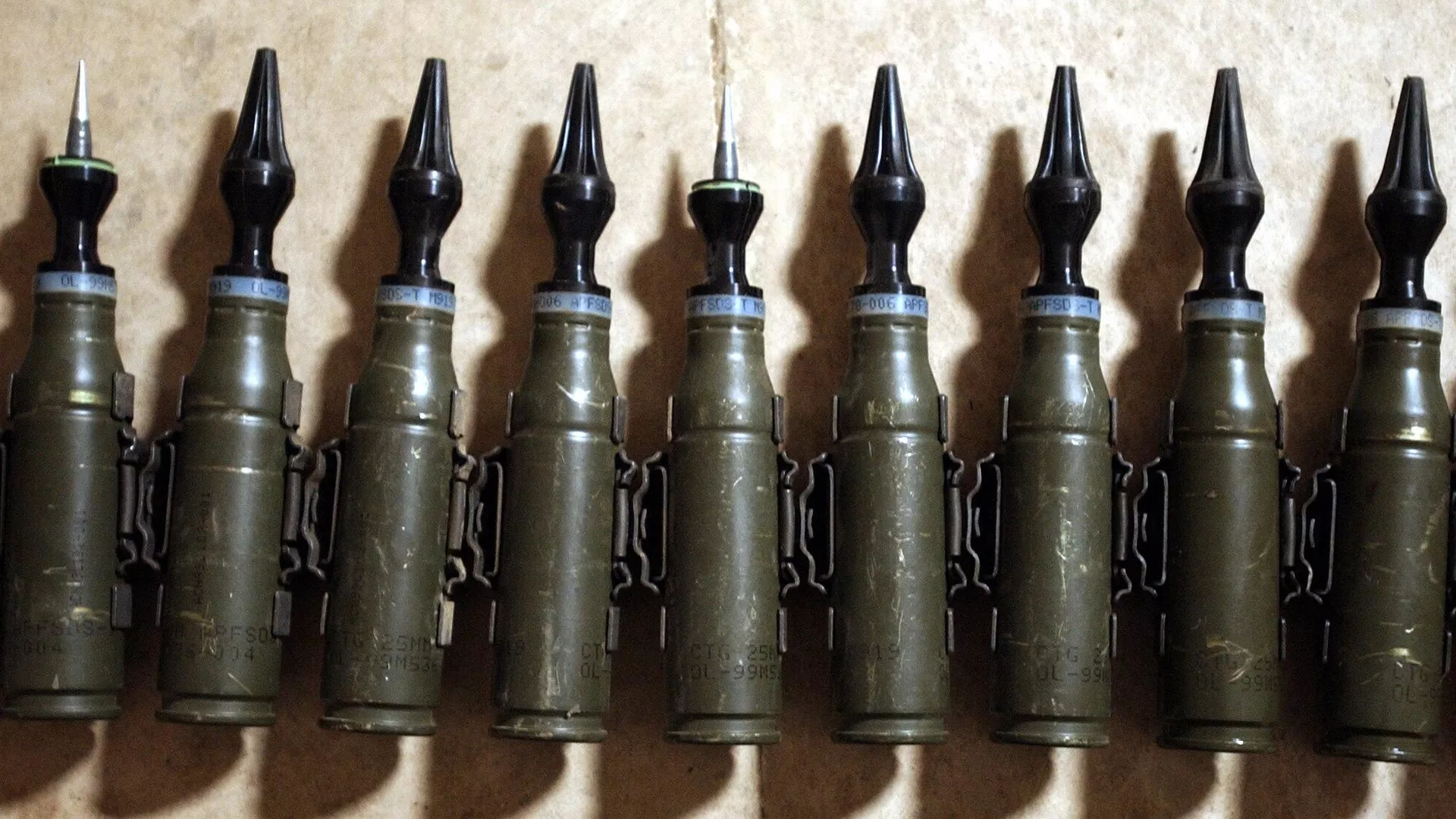Britain sparked an international outcry earlier this year when officials revealed that the Challenger 2 tanks sent to Ukraine would be equipped with depleted uranium (DU) shells. The US is now expected to follow suit with DU rounds for Ukraine’s Abrams. A Russian military observer explains why the toxic arms won’t change the situation at the front.
A White House National Security Council spokesperson told Sputnik Sunday that they could not confirm reports indicating that Washington is preparing to send armor-piercing DU munitions to Ukraine as part of a new arms package to be announced this week.
The DU munitions are expected to accompany the Abrams main battle tanks the US first agreed to give Kiev back in January to coax its European allies into sending hundreds of their own tanks, with the first batch of Abrams expected to arrive by mid-September, well over three months into Ukraine’s stalled counteroffensive.
Previous reporting on the Ukrainian-bound Abrams indicated that the tanks wouldn’t be fitted with depleted uranium components in their composite armor. However, in June, it became clear that they would likely be armed with DU penetrator rounds, with anonymous officials saying at the time that they saw no “serious obstacles” to deliveries, notwithstanding longstanding international concerns about DU shells’ impact on human health and the environment.
Tank, artillery, and air-launched DU munitions have left a horrifying record of destruction and illness in their wake in the countries where they have been deployed, including Iraq during the 1991 Gulf War and 2003 invasion, Yugoslavia, Afghanistan, and Syria. Russia and Ukraine, the US, the UK, India, Pakistan, France, China, and a number of Western allies in the Middle East and Asia, are known to possess the controversial weapons, but the US and Britain are the only two countries to date confirmed to have ever used them.
The shells’ radioactive properties have a direct impact on their penetrative ability. When fired at enemy armor, DU-tipped rounds generate an immense amount of heat, literally sloughing off portions of the projectile as it rams into its target to keep the shell’s tip sharp and prevent mushrooming. This helps the rounds grind into and through armor almost like a hot knife through butter, penetrating enemy vehicles and killing any unfortunate souls who happen to be inside.
Iraq and republics of the former Yugoslavia are the countries most heavily affected by DU contamination to date, with cancer rates in Iraq jumping from 40 cases per 100,000 people in 1991 to 800 per 100,000 in 1995, to a whopping 1,600 per 100,000 by 2025 after the US and Britain deployed up to 2,300 tons of DU in the country.
In Yugoslavia, at least 15 tons of DU were used during the bombings of Bosnia, Serbia, and Montenegro in the mid-late 1990s, with Serbia subsequently suffering from one of the highest cancer rates in Europe – two-and-a-half times the European average, plus an alarming rise in infertility, a variety of autoimmune diseases, and mental disorders.
Last month, Serbian Health Minister Danica Grujicic appealed to Ukrainian decision makers and the population at large urging them not to allow DU shells to be used on their soil, saying her country’s experience should serve as ample warning of the weapons’ devastating long-term consequences. “Believe me, what’s happening in Ukraine will affect the health of all European countries,” Grujicic told Sputnik.
Ukrainians and Europeans first got a taste of what the Serbian health minister was talking about in the spring, when a massive arms depot outside the western Ukrainian city of Khmelnytsky thought to include DU munitions for Ukraine’s Challenger 2s went up in smoke, resulting in a massive spike in levels of gamma radiation levels in neighboring Poland.
Russian officials have also warned of DU weapons’ dangers. Foreign Ministry spokeswoman Maria Zakharova noted late last month that the use of the weapons would turn portions of Ukraine into an “uninhabitable” wasteland, with “radioactive contamination of the soil…already happening” and being recorded.
Ukrainian and most Western media have been more upbeat, however, insisting that the DU would give the nation’s armed forces the shot in the arm they need to bolster its flagging counteroffensive –which to date has seen immense losses in manpower and equipment, but very little to show in terms of gained ground.
“The main advantage of DU munitions is their higher penetration level,” Boris Rozhin, a military expert with the Center for Military-Political Journalism think tank, told Sputnik.
The obvious disadvantage, the observer added, relates to the threat of radioactively contaminating wide swathes of the surrounding environment. DU rounds “were used in wars on the territory of the former Yugoslavia, on the territory of Iraq. In those cases, there is proven harm to health after the use of such projectiles, with the number of people suffering from the use of these shells measured in the hundreds of thousands. They have suffered radiation-related damage to their tissues and organs, leading to a range of diseases and early mortality.”
Unfortunately, Rozhin said, the United States military does not formally recognize the validity of DU-related risks, positioning it as “relatively harmless,” despite mountains of evidence to the contrary.
So far, the observer pointed out, the DU-equipped Challenger 2 tanks have not been spotted on the battlefield. Their successful use against the armor of Russian tanks like the T-72B3 or T-90 would require the tanks to approach quite close, to within 3,000 meters. This is something Ukrainian forces have found difficult to do amid Russia’s overwhelming air and artillery superiority, which has often enabled Russian forces to target Ukrainian armor at ranges of tens of kilometers away, long before it can approach close enough to return fire.
US Depleted Uranium Shells Will Poison Ukraine, Won’t Change Conflict’s Outcome




